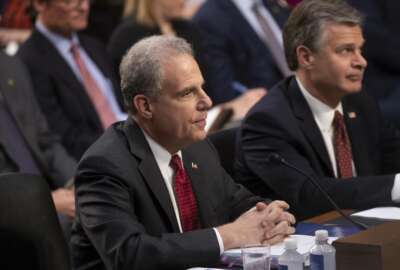

What's next for big federal parcel in SE D.C. could take years to sort out
Federal facilities don’t exist in a vacuum. They occupy space, sometimes expansive, in the midst of communities all over. I remember from high school some of guys driving out in their Cutlass 442 convertibles, taking girlfriends to “the Nike site” — a defunct, post-World War II missile launch area in the woods of the town.
The former Army Signal Command’s Fort Ritchie, in Maryland’s Washington County, closed more than 20 years ago. It still lies in limbo amid indecision among the county and various corporate developers. A perhaps happier story is the parcel once occupied by Walter Reed Army Hospital in the “tree” streets of upper Northwest Washington, D.C. Now condos on the redeveloped site start at $400,000. Maybe someone will recreate the Polar Bear frozen custard shop on Georgia Avenue?
R.F.K. Memorial Stadium exists on a big parcel of land right smack in the middle of Southeast D.C. The parcel is the federal government’s. The rickety stadium belongs to the city, which, as widely reported, is seeking bids for a contract to demolish it.
For those outside of the D.C. area, understand that for locals, R.F.K. holds a special place in modern cultural memory. Many long-remembered sports and musical events took place there. In what were once outfield baseball seats, a few of the yellow wooden seats are painted white to commemorate the landings of home runs by Frank Howard.
Built in 1961, then-Interior Secretary Steward Udall stopped the Washington Redskins from moving in unless the owner, the innovative but notoriously bigoted George Preston Marshall, integrated the team. He did, so the stadium in that sense occupies a place in the history of the U.S. civil rights struggle.
Now what?
The District of Columbia has legitimate if parochial concerns about the land. Many would like the Redskins to return to D.C., although the ethical and financial merits of public subsidy to private sports interests have been pretty much debunked.
As for the federal government, it has this 190-acre site, a beaut. It lies next to the slowly-improving Anacostia River. The Stadium-Armory Metro stop stands adjacent. I used to walk to RFK from Union Station for Nationals games. And it lies in the path of a seemingly inexorable housing and commercial boom emanating out from the Navy Yard-Nats Park area.


The GSA could simply auction the land to the highest bidder. If a sports team owner wants it, let him pay a full and fair market price. I’d guess a billion dollars would be about right for the R.F.K. parcel. From what I’ve read, Redskins cash flow could handle that.
The site already has great access roads so the kabuki dance of who pays for road improvements wouldn’t be part of the negotiations. Ditto for water, electricity and sewage. The District, since it owns the stadium, could auction off the seats to collectors. I’d buy a pair of my old season ticket seats in the nosebleeds.
I suppose the city’s agent could get bidders for the urinals. Wealthy locals also have summer homes and beach houses — what a conversation piece.
The government could decide to hold onto the land. Think of how much new federal office space it could stuff in there, the FBI, for instance?
But auction or reuse concepts aren’t really so simple. For one thing, the city’s lease from the National Park Service runs for a few more years. Whatever happens would likely require a congressional imprimatur. An outright sale would require at act of Congress.
The city also has an interest in what happens there because so many people live in the surrounding areas. Mix in federal government interests, local government, Congress and all of the groups that would claim an interest, and you’ve got a recipe for a couple of decades of dispute. One former agricultural parcel in Montgomery County was tied up in litigation for 20 years before it finally changed hands and got developed starting in the early 2000s.
For the most part, cities and their inhabitants aren’t sentimental about structures. In nearly every city, even architecturally significant buildings have been demolished. The Munsters-esque Old Executive Office Building — I mean, the Eisenhower Executive Office Building — was itself built on the site of an earlier federal building.
RFK, like the old Boston Garden arena, will be remembered more for what happened there than for the building itself. Demolition will be easy. You’ll be able to see it on YouTube. What comes after for this federal land — don’t hold your breath.
Copyright © 2025 Federal News Network. All rights reserved. This website is not intended for users located within the European Economic Area.
Tom Temin is host of the Federal Drive and has been providing insight on federal technology and management issues for more than 30 years.
Follow @tteminWFED
